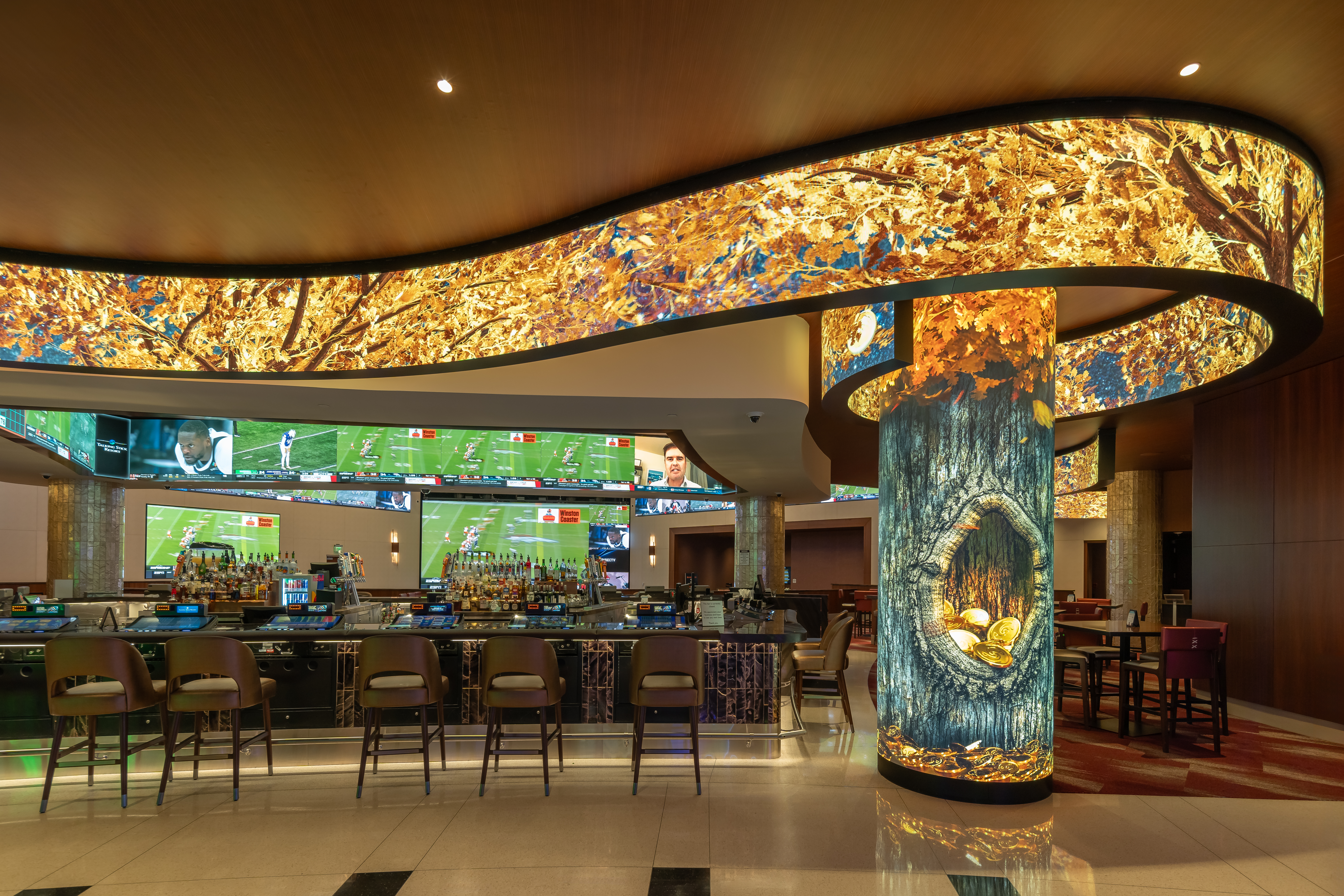
When it comes to sign shop roles in digital signage projects, most of the times, this work is going to encompass electrical and installation. However there is also work needed to be done on the part of sign makers to acquire these jobs in the first place—as well as continue their involvement in this field.
Deacon Wardlow, continuous improvement manager at Vantage LED in Ontario, California, advises, “Don’t look for vendors. Instead look for partners. The market is flooded with companies selling digital solutions. It’s easy to get a price and ‘what you need,’ but it’s also just as easy to end up with something the client will be unhappy with in the long term.
“Digital signage is not a ‘one size fits all’ solution. Ideally a digital signage program delivers on client need, and answers that need effectively,while allowing room to grow to answer needs they might not be aware of now.”
Paul Hughes, national sales manager at ThinkSIGN, believes it’s fair to say that a majority of digital signage project opportunities for sign shops arrive from their local networking and customer relationships. “Increasingly, though, leads are being shared from manufacturers,” he says.
“Many times, the access to these new developments rely on architects or other key employees (facilities maintenance, marketing solutions director, etc.) to pave the way for the signage on specifications,” adds Roxanna McCoy, director of Operations at ThinkSIGN. “However, when a company is on the search to update their signage or in the process of resurrecting their first signage, I would say that word of mouth and community involvement moves the directional needle more than anything.
“When someone has a great experience, they share with others in need of the same outcome. When someone is in the market to make a substantial financial decision for their company, they check in with others to see how the same model has served them.”
McCoy says that getting involved with digital signage can be overwhelming for a sign company that has never done it before. However she cites digital has been the way for many years now and cites studies showing that this industry segment is not retracting but instead improving and evolvoing. “To stay relevant, you need to provide what the people want,” says McCoy.
Thinking Ahead
Developing a five-year plan is long-standing advice for a business that’s looking to grow and expand; however when it comes to sign shops exploring involvement in digital signage, evolving acceptance of this technology means they’re going to have to push up the clock.
“If a sign shop thinks that their typical business landscape is going to be the same five years from now as it is today, then they’re not planning far enough ahead,” warns Taylor Nilson, on-premise market manager at LED display manufacturer Daktronics in Brookings, South Dakota.
For example, expectations are that your high-value accounts won’t just be looking for you to replace or add a sign. “They’re going to be looking for a digital marketing plan that include reimaging both indoor and outdoor spaces with multiple digital applications,” says Nilson, “and they’re going to be looking for an efficient way to control these displays.”
In an increasing effort to help sign shops understand how to get involved with digital signage, we’d like to answer: How does your sign shop prepare to take on these responsibilities?

There are multiple ways sign shops can get involved here. An obvious one is through relationships with manufacturers or integrators. They can also get pulled in through an end-customer.
For example, let’s say that one of your trusted, important accounts is a regional bank that has fifteen or so locations. During your quarterly or bi-yearly meetings with them, probe even further when gauging their signage needs. Ask them to tell you about initiatives they’re working on and their goals. “You can then figure out what that bank is trying to get done in the next year or two and if that could involve digital signage,” explains Nilson.
Additional questions to ask: Why are they replacing the sign? Is this a rebranding effort? What are they doing inside? “And most importantly, ‘What else can we do for you as a part of this overall project and strategy that you’re working on?’” advises Nilson.
If they’re using LCD screens inside, but the content isn’t tied into their digital sign outside, then this could be an opening for you to upsell them either on better-looking screens or employing an integrated, scalable control solution. “It’s all about the client being consistent and efficient with their branding and advertising both inside and outside,” says Nilson,
This underscores an important factor when it comes to sign shops getting involved with digital signage—you have to be proactive. “You have a much better chance of winning the project if it’s your idea,” says Nilson.
The number-one rule of Digital Sign Club for sign shops is don’t wait to be asked. You want to be on the front end. “If an end-customer has already started exploring partners for a new digital sign project, there’s a good chance you’re already out before you can ask to get involved. They’ve probably already done a bunch of legwork and research.”
For those clients that do come to shops asking about digital signage, Nilson urges to avoid doing just the bare minimum. “A big mistake I see some shops make is just providing pricing on exactly what the customer asked for and then leaving things at that,” he says. “You have to become more aggressive on what you can do for them.”
Hughes concurs. “Too often, when we call a sign shop to follow up on a project quoted, we hear they haven’t followed up to ask further questions, or, ‘Oh yeah, I should call them,’” he laments. “Lack of following up or following a process to close the cycle is definitely a common mistake I’ve seen.”
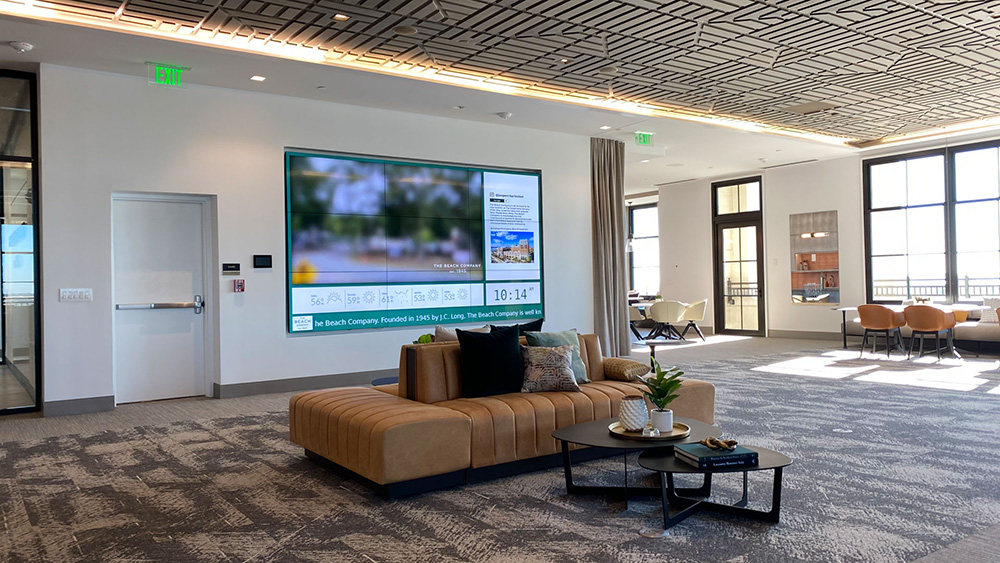
Additionally not utilizing the demonstration of both hardware and software is detrimental to the end-users’ understanding of what they been proposed. “Demo the software for your potential customers,” says McCoy. “Everyone needs to be shown what is possible, and the sky is the limit with digital versus the one-way messaging of another type of signage.
“Show them the possibility of communicating with the world, sending new messages daily, and unlimited updates. Who would choose any less than that?”
One of Hughes’ frustrations involve sometime feeling under-utilized by sign shops. “Too often, we just send a quotation and never get to demonstrate or assist. Ideally we want to be involved to assist in helping close those projects,” he says. “When we demonstrate and participate, our signage partners close 50 percent more of those opportunities.”
Be aware that sticker shock can come into play. How will the sign shop react when a customer brings this up?
“If the sign company cannot justify the higher cost for a marketing medium such as this, the decision will always move with the more affordable option,” says McCoy. “The end-user has a wealth of influence on their audience with a digital sign versus any other type of signage known. But if we cannot demonstrate the value for them, odds are we have lost already because we have failed to guide them.”
Wardlow says that manufacturers are supposed to be the experts in the field and that they shouldn’t be the one-stop shop. “But as a partner, they should be able to work with sign shops to ensure that they have access the right tools to succeed in the market,” he says.
He admits that some sign companies are perfectly happy with a buyer/vendor relationship. “However the market is getting increasingly complicated and complex—not just in product differentials but in offerings and innovation,” says Wardlow. “To navigate that well, sign shops are better served with a knowledgeable partner to work with versus someone who is just looking to get another sale.”

So What’s Your Role?
Fortunately there are several roles sign shops can play in a digital signage project today. They can be a straight-up installer. Or they can be a partner with other companies. They can even be a collaborator—which can lead to even being a competitor.
Collaboration typically involves working with A/V integrators in both indoor and outdoor spaces. The traditional norm is that sign shops are involved with outdoor aspects while A/V integrators tend to focus on the interior.
This hesitation to deal with outdoor aspects of a project can be an opportunity for your shop. “A bank may approach an A/V integrator about interior digital displays, while contacting a sign shop about awnings or backlit letters or installation of an outdoor EMC,” says Jim Vasgaard, National Sales Manager-AV Partner Development at Daktronics.
Vasgaard spells out that A/V integrators’ core capabilities are being able to have an expansive knowledge on a variety of different products and players, how a business operates, and know-how on the computer network support and electronic pieces. Sign companies, on the other hand, are more heavily into the construction aspects of a project—welding and fabrication. They’re also skilled at the permit process, which is a huge advantage for you to break into this field.
“AV Integrators are not only nervous about the heavy construction aspects of the exterior but they’re not really invested in the permitting process,” he says. “They know that a permit is required for certain types of outdoor work but the specific details of how to get that done and how to navigate that process is daunting for them the same way that electronics, low-voltage, computer systems, and CMS systems can be daunting for the sign company.”
As a collaborator for both indoor and outdoor spaces, it’s important that sign shops ask A/V integrators discovery questions. “It’s not just trying to figure out the product you’re asking for the manufacturer to supply. It’s also the outcome you’re trying to generate here,” says Nilson. “You really have to know what your strategy is going to be.”
It doesn’t hurt to think beyond an exterior digital sign at your shop. “Indoor digital work should also be a part of your expertise,” advises Nilson. “If a shop limits itself to just outdoor work, they can lose opportunities to expand the project’s scope, the project itself or, even worse, the account altogether.
“Neither is harder than the other. They’re just different.”
Depending on size, an outdoor display is typically a face with a single cabinet, while indoor displays typically involve working with a variety of panels. “It’s not rocket science. You don’t need an engineer to do it,” says Vasgaard. “But when it comes to indoor displays, you do have to make sure everything is flush and level so that the cabinets can go together.”
Realize that indoor resolutions are going to be tighter (1mm to 2.5mm, depending on viewer distance) than outdoor (which are getting as crisp as 10mm nowadays). This is because viewers are more up-close to these displays, which means you can’t get away with as much as you can outdoors. “The importance of having that interior digital display screen absolutely flush flat and with zero seams is critical because of the fine pixel pitch,” says Nilson. “Registration of the modules has to be nice and tight and flat and flush.”
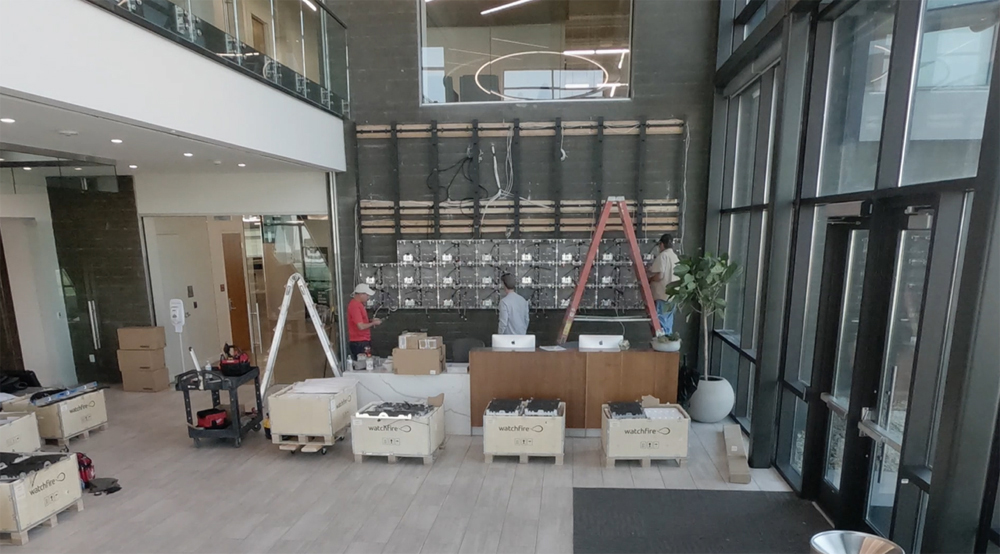
According to Nilson, Daktronics is actively training and educating sign shops and A/V integrators both on digital and helping them do better discovery and lead identification on these types of projects. “The truth is that most integrators are not actively looking for sign shops to partner with today,” he says, “and sign shops are not seeking out A/V integrator partnerships.”
However reaching out and collaborating with A/V integrators can lead to the role of a student or learner for a sign shop. “You can team with an AV integrator to let them guide you through the process. Then you can compete in that market later on with what you’ve learned,” says Nilson.
Eventually there is an opportunity for sign shops to become the teacher. “There are many signage options available, and the key is to set digital signage apart from the rest,” says McCoy. “The sign shop is responsible for educating and guiding the best signage solution for their client.”
Questions that shops need to answer for their business clients: Why should anyone invest XX more amount of dollars in a digital sign versus a static sign? What is the value and return on investment for paying the higher cost?
“The sole purpose of business signage is to attract as many customers as possible. Content is what attracts the audience in the first place,” says McCoy. “Digital signage is much more advanced in the content and creativity at the user’s fingertips with immediate updates.
“Sometimes digital signage is an entertainment medium while customers are waiting to be served. Industries across the world use this medium to increase brand awareness, interact with their customers, and disseminate product information.”
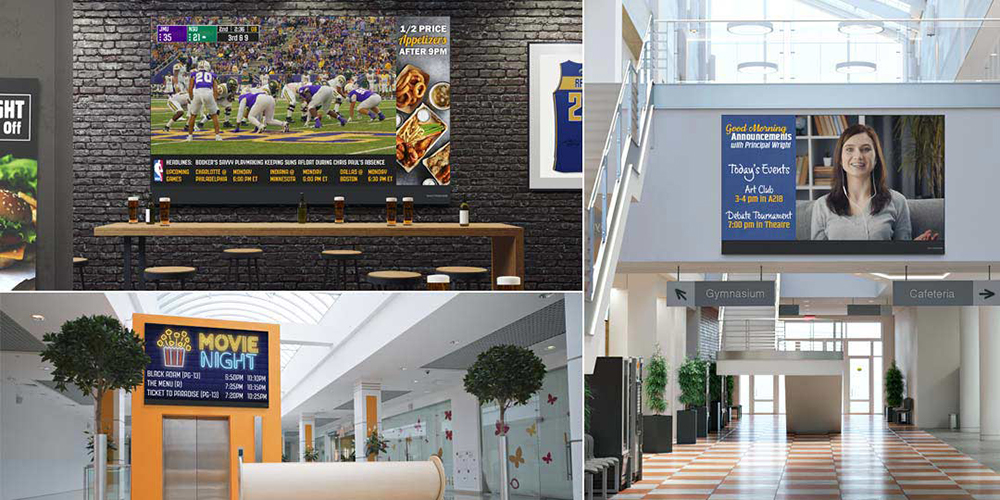
Near-term Horizon: Blending and Blurring
Nilson and Vasgaard both believe though that there is going to be more of a blending and blurring of the eco-system between sign shops and AV integrators on the near-term horizon. “Some sign companies and AV integrators are going to say I know what I know and know what I am good at, so I’m not worried about any changes in the organization or changes in the industry,” says Nilson.
“But there are going to be people on the other side who are cutting-edge, early adopters,” picks up Vasgaard. “There are going to be sign companies eager to get involved with indoor applications and that type of work. And there are going to be some AV integrators that are going to ask about outdoor aspects of the project as well.”
The reality is that the great silent majority in the middle of the normal distribution curve is going to get dragged into this over time. It’s going to be important to have an answer prepared if a major account comes to you asking for involvement in their digital sign project.
“You could say to them that you can figure it out, right? Then you get into it, decide you like it, and then want to make it part of your core business,” says Nilson.
Seeking out an A/V integrator partnership can present you with a new opportunity. “But if you wait, you’re always going to be playing catch up,” says Vasgaard.
Conclusion
If you’re serious about exploring this field, it’s not an unsurmountable climb. Vasgaard says to go out and learn how this world works. Attend tradeshows. Take classes. Watch webinars.
“But you have to dig in and ask questions and start to connect the dots of how the market works. That positions you to be way more successful,” he says. “What does the customer look for? What’s the solution you’re after?
“It doesn’t always have to be a total encompassing A/V system; there are projects that might be more fitting for you as you’re trying to get started. But how do you get to that point? How do you recognize that?”
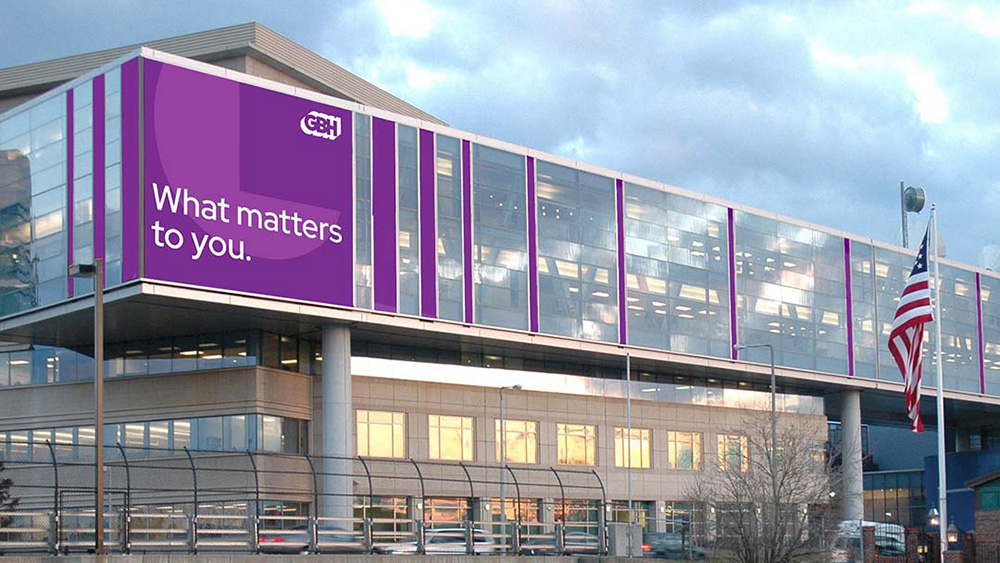
Nilson says that Daktronics would like for sign shops to take on the understanding that they do more than build signs. “They have a higher calling,” he says.
Sign shops could already be playing behind the digital eight-ball. They may not have expertise on the fine craftsmanship required for image quality on indoor digital installations. They may not also be familiar when it comes to integration with audio and front-end/CMS.
Since hiring can be challenging now, consider this an opportunity to develop and grow your employees’ skills and expertise (while improving their retention)—whether this is low-voltage, indoor, audio, CMS, etc. “Ask yourself what you are good at and what are your weaknesses,” says Nilson. “If you do that inventory of your organization, you’re going to find that you have some serious weaknesses.
“If you want to be competitive in the future as the industry changes, then you need to have a plan and adding skill sets to your team is going to be part of that.”



